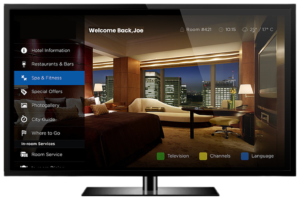Address
304 North Cardinal St.
Dorchester Center, MA 02124
Work Hours
Monday to Friday: 7AM - 7PM
Weekend: 10AM - 5PM

Digital signage is a centralised system that serves as a content distribution platform for displaying digital content on one or more displays or screens. Digital signage screens are used to display a variety of information such as live weather, news, TV, menus, flights, calendars, and advertisements.
‘Digital signage is a type of electronic display that displays television programming, menus, information, advertising, and other messages. Digital signage (which frequently uses technologies such as LCD, LED, OLED, or projected images to display content) can be found in both public and private settings, such as retail stores, hotels, restaurants, and corporate buildings, among others. “Source: Wikipedia“.
Digital signs are utilised in many different industries, but the most noticeable and eye-catching users are typically retailers that use them in store windows or to advertise sales and inventory. Along with providing staff communications messages, information for guests, residents, and visitors, or a branded TV channel, digital signage systems are also used by hotels, senior living communities, stadia, arena, conference venues, schools, colleges, universities, local councils, governments, hospitals, GPs, and businesses all over the world.
Digital signage is a technology that combines a number of essential elements that, when used properly, yield amazing results. These elements include;
The following are crucial characteristics of digital signage CMS platforms:
As you can see, there are many factors that affect deployment, making the question “what is digital signage?” highly pertinent and valid.
Digital signage has gained popularity because it interacts with audiences more effectively than static signage. It becomes more fascinating because to moving pictures, eye-catching visuals, and the ability to immediately update the content. An organisation can guarantee that signs screens look exciting, modern, and pertinent by using digital delivery.
Digital signage was regarded as a technological instrument that needed an IT team’s assistance. The needs of a marketing or communications team are increasingly taken into consideration when designing CMS platforms, allowing for easy update and control. While there can still be some complex integration work required to deliver the solution implementation, day-to-day operation should no longer be a technical challenge.
Digital signage networks can be as complex or as simple as you like, scaling from control of one, two or three screens, up to however many you can handle. Zoning features allow you to send the same content to multiple screens or to just a handful.




























































































